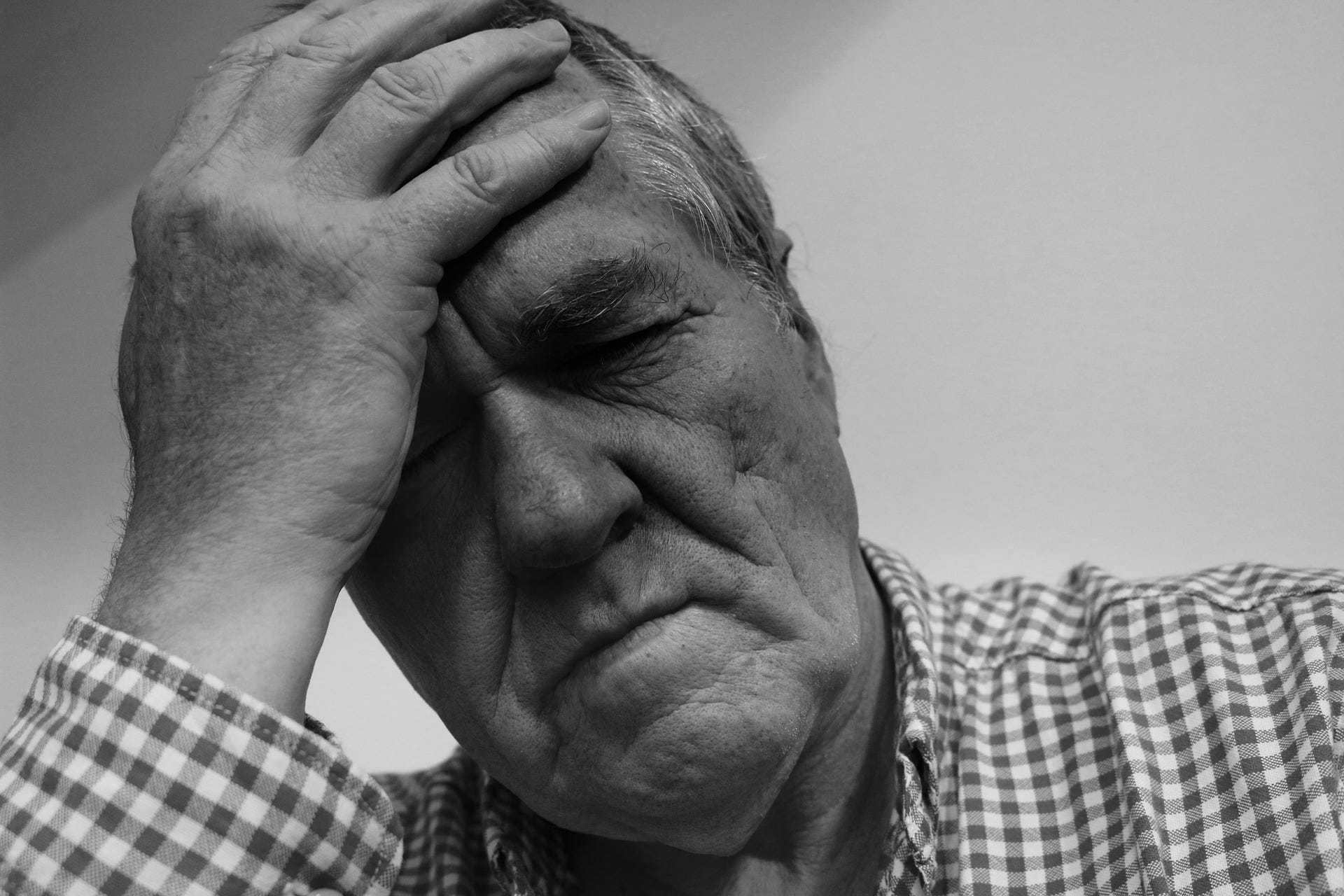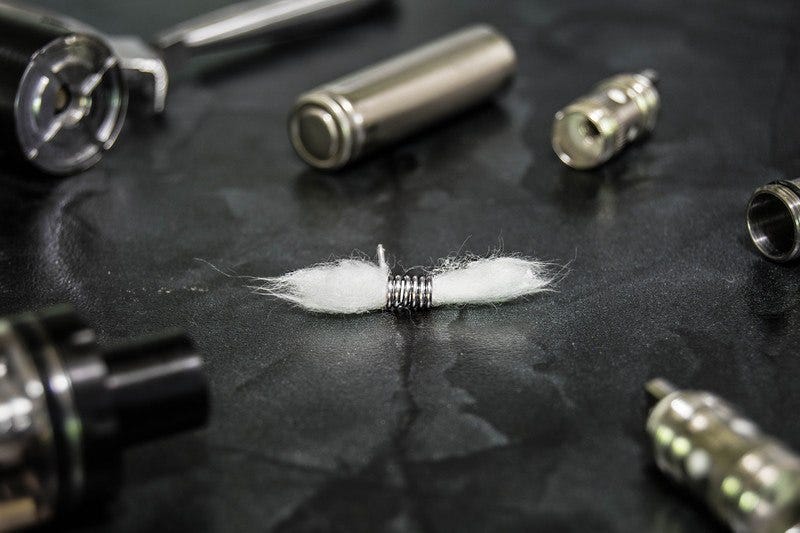This really is the vape industry's zombie issue. It keeps coming back year after year, but never resolved. And it's a complex one which divides opinion. In this piece, I'm not looking to hash out the rights or wrongs of the companies involved in the latest sagas or to talk about the particulars of these cases, but to draw out some of the perspectives that mean this issue may never be fully resolved.
DA, in particular, exists widely in nature, and is responsible for the buttery taste of many foods and beverages. It's absolutely safe to eat or drink, but inhalation is known to be problematic. A number of cases of Bronchiolitis Obliterans in popcorn factory workers exposed to DA led authorities to create very strict limits to the amount of DA that workers may be exposed to. It has since been discovered in workers in other manufacturing plants. Bronchiolitis Obliterans is a condition in which irreversible scarring to the lungs is produced, in serious cases requiring lung-transplants. Ironically, the only other known causes of Bronchiolitis Obliterans is lung transplants themselves.
Acetyl Propionyl has a very similar taste profile to DA, and it appears many manufacturers may have chosen to use it in e-liquid as a replacement for Diacetyl in the mistaken belief that AP is safe or safer. There's ample reason to assume that AP has almost exactly the same safety profile as DA.
Short answer, because they taste great. In addition to being a buttery flavour, DA/AP can give fruit flavours 'ripe' characteristic and are, in a sense, the 'monosodium glutamate' flavour-enhancer of vaping.
The longer answer is a bit more interesting. In 2010, the vaping community became aware that DA was present in e-liquids and that this was a problem, and the few e-liquid manufacturers who were around back then took it seriously enough to make efforts to remove it from their e-liquids. Those manufacturers requested of their flavour suppliers that the flavouring compounds they supply did not contain DA, and most thought that this was the end of the story.
Skip forward to 2014, and Dr. Konstantinos Farsalinos was conducting some tests on e-liquids from a German supplier, and he made a discovery: the e-liquid contained DA in concentrations far higher than the NIOSH occupational hazard levels, and yet the manufacturer was absolutely unaware that there was any DA, despite having previously tested for it. So what had happened?
Quite simply, there is not a one-size fits all testing approach that is appropriate to shoehorn e-liquids into (although see this document by Nico ventures/BAT). The laboratory must know what they are looking for, and they must set the correct 'limits of detection' in their equipment. Standard GC/MS wasn't picking up DA because the limit of detection was set at around 1%, which is way above the NIOSH DA limits.
Dr. Farsalinos was shocked. He assumed that if this e-liquid contained DA, and the manufacturers were unaware of this, then others would have the same issue. He went to the vaping community and crowdsourced funding for a large test of popular e-liquid brands which he purchased anonymously. Again, what came back shocked him - the vast majority (74%) of the sweet flavoured liquids he tested came back with DA/AP, and 47.3% of DA and 41.5% of AP-containing samples exposed consumers to levels higher than the safety limits.. Rather than publish the names of these companies, he wrote to them directly telling them the issue and urging them to remove DA/AP from their future stocks.
Clearly, with some companies at least, this has not happened.
This is the £64k question. Those cases in which diacetyl was seen directly to cause bronchiolitis obliterans were cases in which workers were exposed to an actual vapour from heated flavourings. Despite the name, vaping itself is actually not, in the main, the inhalation of a vapour, but of an aerosol. In an aerosol, the particles from the gaseous phase have condensed into larger droplets. It's unclear whether these droplets are capable of depositing DA/AP deep within the lung.
However, there is a vapour component to the output of e-cigarettes, and this likely varies according to the composition of vape juice. For example, greater water content in e-liquid may result in a greater vapour component, and it's possible a greater vapour component would lead to DA/AP being delivered deep into the lung tissue. The fact is we simply do not know at this stage what the dynamics are.
Many vapers make the following points in defence of DA/AP: Firstly, that in over 7 years of popular usage of e-cigarettes no-one has suffered Bronchiolitis Obliterans, and secondly that smoked tobacco typically contains more diacetyl than those e-liquids in which it is found.
However, this line of reasoning falls down. While it is true that DA has not caused fatal Bronchiolitis Obliterans in vapers, there is great uncertainty about its contribution to disease amongst smokers. Firstly, COPD and emphysema are conditions whose causes are not fully understood; it's likely that DA has at least some contributing factor to both (As stated by Farsalinos at GFN). Secondly, it's likely that Bronchiolitis Obliterans is actually underdiagnosed. A positive diagnosis requires invasive biopsies, and so most smoking related respiratory conditions are diagnosed as COPD or emphysema.
Regardless, DA/AP do not need to be in e-liquid, and so their inclusion can be thought of as an'avoidable risk'. After all, you can vape e-liquid with no flavours at all.
This, though, leads neatly to a very interesting divergence of opinion, and a debate that seems unlikely to be resolved any time soon.
It may be the case that DA and AP do impact on lung health in both smoking and vaping (although see Dr Polosa on emerging evidence regarding lung health in vapers), so it should clearly be removed, correct? Well, the notion that e-cigarettes need to be 100% safe is actually something that seriously divides opinion amongst high profile commentators, scientists and, of course, vapers.
The core debate is between 'harm reduction' and 'absolute safety' advocates. And this is where things get really complex!
On the one hand, there's what I'll refer to as the ace Clive Bates position: Anything that's safer and causes smokers to stop smoking should be encouraged, even if it entails a risk that is greater, or much greater than 0, but also much less than smoking. In particular, if a flavouring compound creates additional risk but it also appeals strongly to many smokers, at the population level this will cause a reduction in overall harm because more smokers will transition.
Then on the other, there's the two 'Farsalinos positions' (the hard and the soft versions): In the hard version, anything that's an identifiable risk should be eliminated. This is a technology - not a burning material - and anything which can be done to reduce risk should be done, and anything harmful in the e-liquid (excluding nicotine) can be and should be removed.
The soft version: If an e-liquid is produced which contains ingredients that are known hazards this should be made clear to the consumer such that they can make an informed choice as to whether or not to consume such products.
Actually, and without speaking to or for Clive, I would suggest that his position and Dr. Farsalinos' (soft) position can be reconciled. That is to say, I don't think Clive would necessarily consider it problematic that consumers be informed about risks with certain ingredients, so that they can make an informed decision.
How do you communicate risk to consumers, especially when there's really no data or evidence available to consumers as to what that risk might be?
It's hard enough to explain risk about hazards that are well understood by experts; smokeless versus smoked tobacco, for instance (although bureaucratic inertia and ideology play a big part in that specific example). How do you communicate risk in a way that does not interfere with consumers choosing a much safer alternative? If you say: contains DA/AP, a substance known to be associated with lung conditions, do you put smokers off vaping entirely? Do you put them off choosing a DA/AP containing liquid that would have otherwise helped them to stop smoking? What is the effect in overall population terms? And how truthfully are you actually communicating? After all, the current body of science suggests what you're really saying is this: 'contains DA/AP - substances known in other scenarios to cause irreversible lung damage, but whose safety in e-cigarette products is currently completely unknown' - and how is any consumer able to make a rational choice from that?
I would suggest that this debate is playing out in the wider industry, albeit in less explicit terms. On the one side you have those who wish to create products that are highly appealing to consumers, and aren't concerned about making them as safe a s possible. On the other you have those that maintain that vaping should always be as safe as possible and who take great effort to ensure risk factors are not present in their products.
Sadly, once again, the consumer is the one who's left confused and under informed.
Please don't panic. The main thing is to always think about the relative risk. Even with e-liquids that contain diacetyl, it's still massively safer than smoking. There's no question, the absolute worst thing you could do is to throw out all your vape juice and go back to smoking.
Instead, you should think about whether the pleasure you gain from using a DA/AP liquid is such that you need it to remain smokefree long term, and perhaps consider phasing out using DA/AP liquids over time.
Once again, the absolute worst thing vapers can do is panic and feed more panic: this will just lead to more smoking.
My personal view is that unless and until the vape industry can show that DA/AP in e-liquid is safe for vapers, those whose liquids contain it should make it clear to consumers this is the case, either through a labelling convention or something else. This won't solve everything, but it will at least confer some agency to the consumer to make informed decisions. I think the community really does need to push industry hard for this - even those who have no problem with consuming DA/AP should at least consider those who really do not want to, and have the right to know.
Of course, there are other dynamics at play, such as the media relentlessly causing fear and uncertainty, but I think this idea that informed vapers become more concerned over time should be taken seriously by industry players who want to remain competitive, and it serves vapers well by keeping a perpetual check on the safety of vaping products.






Leave a comment
This site is protected by hCaptcha and the hCaptcha Privacy Policy and Terms of Service apply.